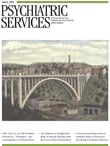This volume covers a broad scope of material, reflecting the disparate range of conditions falling under the DSM rubric of "sexual and gender identity disorders." Among the contributors are recognized national and international experts on sexual and gender identity disorders.
The volume is divided into three sections, each of which begins with an introduction followed by several chapters that include definitions and descriptions of disorders, prevalence and risk factors, assessment strategies, and recommendations for treatment. Each chapter lays out learning objectives and includes tables, graphs, and diagrams to make the text more understandable. A few chapters (although not enough of them) include case studies that illustrate clinical presentations of a particular disorder. Given the complexity of human sexuality and gender, most contributors are attentive to biopsychosocial issues, both in how they affect patients and how they influence the social construction of disorders.
The first section, which makes up half the volume, addresses sexual dysfunctions experienced by men and women, with chapters on disorders of male sexual desire and male sexual arousal disorder; premature, retarded, and inhibited ejaculation; androgens and endocrine function of aging men; problems with sexual interest and desire among women; problems with arousal and orgasm of women; female genital pain and its treatment; and menopause, aging, and sexual response of women. The chapter on disease and sexuality should be required reading for physicians. Although the content is broadly and clearly explicated, and although many authors use gender-neutral language, some chapters have a decidedly heterosexist focus in that they refer to sexual partners only as members of the opposite sex.
The second part, on gender identity disorders, reviews the genetics of sexual development and differentiation and disorders of sexual development and atypical sex differentiation. Intersex conditions are not DSM disorders, but this section is nevertheless quite useful. Also covered are cross-cultural issues and gender identity disorder among children and adolescents as well as among adults.
The final section covers paraphilia and the etiology of sexual deviance; treatment of paraphilic sexual disorders; sexual addiction, which is not a DSM classification; and legal and privacy issues. Legal issues are taken up in some of the other sections as well.
Several contemporary clinical controversies addressed include challenges to the "psychogenic" theory of female genital pain (dyspareunia), gender assignment in disorders of sexual development, and use of hormone blockers in adolescent gender identity disorder to prevent puberty's onset. Oddly, the chapter on adult gender identity disorder omits discussions of the controversies surrounding the diagnostic construct of autogynephilia, which informs much of the author's thinking.
This volume's intended audience includes mental health clinicians and primary care physicians, as well as specialists in the fields of sex therapy and sexual medicine. Some chapters in this volume would make excellent reading in both graduate and postgraduate courses on human sexuality. More experienced clinicians will find a readable review of current thinking. This handbook would be a welcome addition to the reference library of anyone interested in the often understudied and still not completely understood categories known as sexual and gender identity disorders.

